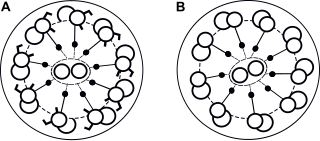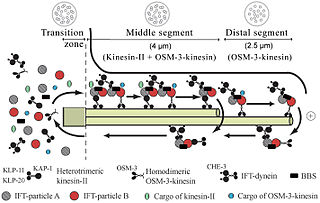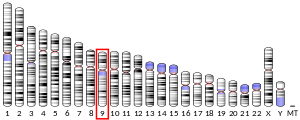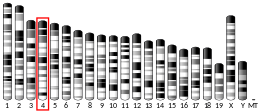
The cilium, plural cilia is a membrane-bound organelle found on most types of eukaryotic cell, and certain microorganisms known as ciliates. Cilia are absent in bacteria and archaea. The cilium has the shape of a slender threadlike projection that extends from the surface of the much larger cell body. Eukaryotic flagella found on sperm cells and many protozoans have a similar structure to motile cilia that enables swimming through liquids; they are longer than cilia and have a different undulating motion.

Dyneins are a family of cytoskeletal motor proteins that move along microtubules in cells. They convert the chemical energy stored in ATP to mechanical work. Dynein transports various cellular cargos, provides forces and displacements important in mitosis, and drives the beat of eukaryotic cilia and flagella. All of these functions rely on dynein's ability to move towards the minus-end of the microtubules, known as retrograde transport; thus, they are called "minus-end directed motors". In contrast, most kinesin motor proteins move toward the microtubules' plus-end, in what is called anterograde transport.

Primary ciliary dyskinesia (PCD) is a rare, autosomal recessive genetic ciliopathy, that causes defects in the action of cilia lining the upper and lower respiratory tract, sinuses, Eustachian tube, middle ear, Fallopian tube, and flagella of sperm cells. The alternative name of "immotile ciliary syndrome" is no longer favored as the cilia do have movement, but are merely inefficient or unsynchronized. When accompanied by situs inversus the condition is known as Kartagener syndrome.

An axoneme, also called an axial filament is the microtubule-based cytoskeletal structure that forms the core of a cilium or flagellum. Cilia and flagella are found on many cells, organisms, and microorganisms, to provide motility. The axoneme serves as the "skeleton" of these organelles, both giving support to the structure and, in some cases, the ability to bend. Though distinctions of function and length may be made between cilia and flagella, the internal structure of the axoneme is common to both.

Intraflagellar transport (IFT) is a bidirectional motility along axoneme microtubules that is essential for the formation (ciliogenesis) and maintenance of most eukaryotic cilia and flagella. It is thought to be required to build all cilia that assemble within a membrane projection from the cell surface. Plasmodium falciparum cilia and the sperm flagella of Drosophila are examples of cilia that assemble in the cytoplasm and do not require IFT. The process of IFT involves movement of large protein complexes called IFT particles or trains from the cell body to the ciliary tip and followed by their return to the cell body. The outward or anterograde movement is powered by kinesin-2 while the inward or retrograde movement is powered by cytoplasmic dynein 2/1b. The IFT particles are composed of about 20 proteins organized in two subcomplexes called complex A and B.

Cytoplasmic dynein 2 heavy chain 1 is a protein that in humans is encoded by the DYNC2H1 gene.

Dynein axonemal heavy chain 5 is a protein that in humans is encoded by the DNAH5 gene.

Dynein heavy chain 9, axonemal is a protein that in humans is encoded by the DNAH9 gene.

Dynein heavy chain 11, axonemal is a protein that in humans is encoded by the DNAH11 gene.

Leucine-rich repeat-containing protein 50 is a protein that in humans is encoded by the LRRC50 gene.

Radial spoke head protein 9 homolog is a protein that in humans is encoded by the RSPH9 gene.

Radial spoke head protein 4 homolog A, also known as radial spoke head-like protein 3, is a protein that in humans is encoded by the RSPH4A gene.

Dynein axonemal intermediate chain 2 also known as axonemal dynein intermediate chain 2, is a protein that in humans is encoded by the DNAI2 gene.

Dynein axonemal light chain 1, (LC1) is a protein that in humans is encoded by the DNAL1 gene.

Kintoun, is a protein that is encoded by the DNAAF2 gene.

Radial spoke head 1 homolog (RSPH1), also known as cancer/testis antigen 79 (CT79) or testis-specific gene A2 protein (TSGA2), is a protein that in humans is encoded by the RSPH1 gene.

Dynein, axonemal, heavy chain 7 is a protein in humans that is encoded by the DNAH7 gene.

CCDC40 is the gene in humans that encodes the protein named coiled-coil domain containing 40.

Dynein axonemal heavy chain 1 is a protein that in humans is encoded by the DNAH1 gene.

Pleasantine Mill is a cell biologist and group leader at the MRC Human Genetics Unit at the University of Edinburgh. She won the 2018 British Society for Cell Biology Women in Cell Biology Early Career Medal.




















